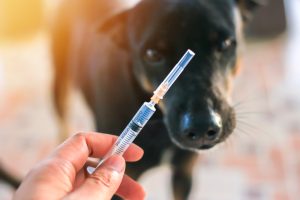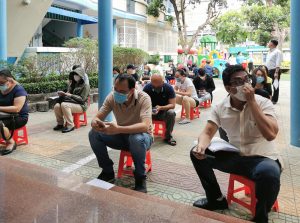In the battle against HIV/AIDS, adopting a multi-faceted approach is imperative. These approaches include education, harm reduction, access to prevention tools, targeted interventions, healthcare integration, legal reform, promotion of healthy relationships, research, community engagement, and addressing socioeconomic disparities.
Despite persistent challenges such as religious opposition, strategies exist to navigate these obstacles and effectively curb the spread of HIV/AIDS.
The Rising HIV Crisis in the Philippines
The Department of Health has reported a concerning surge in HIV cases in the Philippines, with over 120,000 recorded cases from January to September last year. Of these, 13,516 were newly diagnosed cases, with 95% affecting males. Most new cases (79%) are between 15 to 34 years old, underlining the need for targeted interventions, particularly among young men. Despite available treatment, only 71% of diagnosed cases receive anti-retroviral therapy. Urgent action is needed to expand access to prevention tools, improve healthcare systems, and address social barriers to HIV care.
Promoting Consistent and Correct Condom Use
Education plays a crucial role in promoting consistent and correct condom use. Comprehensive campaigns should focus on dispelling myths, providing accurate information about condom effectiveness, and teaching proper usage techniques. By empowering individuals with knowledge, we can increase condom usage rates and reduce the risk of HIV transmission.
Making Pre-Exposure Prophylaxis (PrEP) Accessible
PrEP is a highly effective preventive measure for individuals at high risk of HIV infection. Ensuring the availability and accessibility of PrEP to key populations, such as serodiscordant couples and those engaging in high-risk behaviours, is crucial. By making PrEP readily accessible, we can significantly reduce new HIV infections.
Implementing Targeted Interventions for Key Populations
Tailored interventions are essential to address the specific needs of key populations, including men who have sex with men (MSM), transgender individuals, sex workers, and people who inject drugs. Community-based outreach, peer education programs, and culturally sensitive healthcare services can effectively reach and support these groups in HIV prevention efforts.
Integrating HIV Prevention and Treatment Services
Integration of HIV prevention, testing, and treatment services into existing healthcare systems is essential for ensuring accessibility, particularly in rural and underserved areas. By integrating these services, we can streamline care delivery and reach a broader population, thus reducing barriers to HIV prevention and treatment.
Moreover, needle exchange programs are vital in reducing HIV transmission among injecting drug users. By providing clean needles and access to healthcare services, these programs minimise the spread of the virus within this vulnerable population. It is imperative to expand such harm-reduction initiatives to mitigate the impact of HIV/AIDS.
Addressing Legal and Policy Barriers
Legal and policy barriers hinder access to prevention and treatment services. These include the criminalisation of behaviours associated with HIV transmission and discrimination against marginalised populations. Advocating for legal reform and combating stigma are critical steps in overcoming these barriers and ensuring equitable access to care for all individuals.
Promoting Healthy Relationship Behavior
Encouraging healthy relationship behaviours, including mutual respect, communication, and negotiation skills, empowers individuals to make informed choices about their sexual health. By fostering positive relationship dynamics, we can promote safer sexual practices and reduce the risk of HIV transmission.
Supporting Research and Surveillance Efforts
Ongoing research and surveillance are essential for monitoring the HIV epidemic, identifying emerging trends, and evaluating the effectiveness of prevention and treatment programs. By investing in research and surveillance efforts, we can adapt strategies to address evolving challenges in HIV/AIDS prevention and treatment.
Engaging the Community and Addressing Socioeconomic Factors
Community engagement is key to the success of HIV prevention and treatment initiatives. They include fostering partnerships with community organisations, civil society groups, and affected communities. Doing so ensures that interventions are culturally relevant, responsive to community needs, and effectively implemented.
On the other hand, underlying socioeconomic factors, such as poverty, gender inequality, and lack of access to education and healthcare, increase vulnerability to HIV infection. Addressing these root causes is essential for creating environments conducive to prevention and treatment. By tackling socioeconomic disparities, we can reduce the burden of HIV/AIDS on marginalised communities.
Conclusion
A comprehensive approach to HIV/AIDS prevention and treatment is essential. By combining education, harm reduction, access to prevention tools, targeted interventions, healthcare integration, legal reform, promotion of healthy relationships, research, community engagement, and addressing socioeconomic factors, we can make significant strides in combating HIV/AIDS. We can overcome barriers and create a world where HIV/AIDS is no longer a pervasive threat. This has to be done through collective action and perseverance.














